Biyang Panlong Cheng Ruins: Where Legend Meets Archaeology in China

An Essential Guide to Visiting Biyang Panlong Cheng Ruins
In This Guide
- An Essential Guide to Visiting Biyang Panlong Cheng Ruins
- The Rich History and Legends of Biyang Panlong Cheng Ruins
- Main Highlights: What You Absolutely Can’t Miss
- Planning Your Visit: A Practical Guide
- Tickets: Prices, Booking, and Tips
- How to Get There: A Complete Transportation Guide
- Local Cuisine and Accommodation Nearby
- Frequently Asked Questions
- Final Thoughts on Your Trip
Visiting the Biyang Panlong Cheng Ruins is like stepping into a time machine, transporting you back over 3,500 years to the era of the Shang Dynasty. Nestled in the Huangpi District of Wuhan, Hubei Province, this archaeological marvel is not just a site of historical significance; it is a testament to the remarkable civilization that laid the foundations of Chinese culture.
Discovered in 1954 and designated as a national key cultural relic protection unit in 1988, the Panlong Cheng Ruins are often compared to other archaeological wonders such as the Yin Ruins in Anyang and the Sanxingdui site in Guanghan. With a sprawling area of 3.95 square kilometers, the site boasts remnants of palatial structures, dignitaries’ tombs, and ancient workshops. Over 3,000 exquisite artifacts have been unearthed, including stunning jade daggers, intricate bronze vessels, and turquoise-inlaid gold ornaments, all of which reflect the artistic and technological prowess of the Shang people.
As you stroll through the remnants of this ancient city, you’ll find yourself enveloped in the echoes of history. The architectural layout of the site, particularly the unique “front palace, rear sleeping quarters” design, offers a glimpse into the social and political lives of its inhabitants. Whether you are an avid historian or a casual traveler, the Panlong Cheng Ruins promise an enriching experience that showcases the artistic and cultural heritage of ancient China.
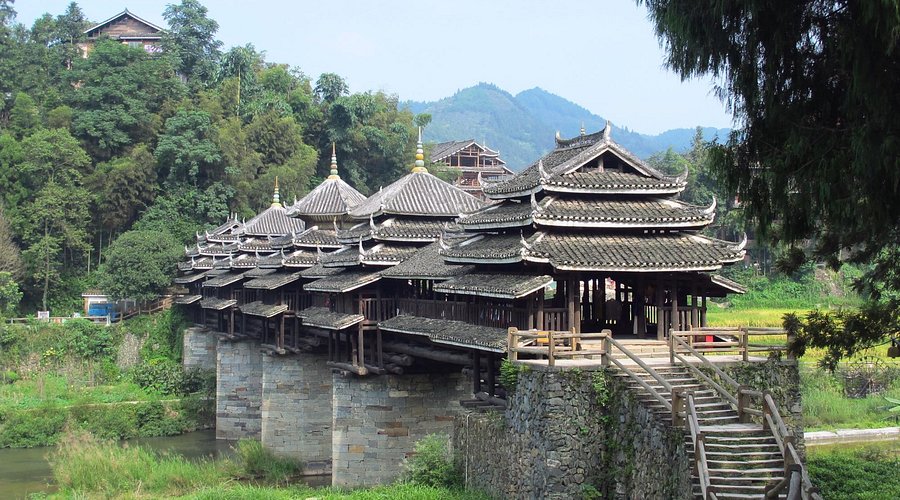
Biyang Panlong Cheng Ruins.
Why Visit?
– Rich History: Learn about the early Shang Dynasty and its influence on Chinese civilization.
– Stunning Artifacts: Marvel at the exquisite relics on display, which highlight the craftsmanship of the era.
– Scenic Views: Enjoy picturesque landscapes that blend history with natural beauty, particularly from the city walls overlooking Panlong Lake.
Prepare to embark on a journey through time as you explore the Biyang Panlong Cheng Ruins—an essential stop for anyone seeking a deeper understanding of China’s illustrious past.

Biyang Panlong Cheng Ruins.
The Rich History and Legends of Biyang Panlong Cheng Ruins
Unearthing the Legacy of Biyang Panlong Cheng Ruins
Nestled in the Huangpi District of Wuhan, the Biyang Panlong Cheng Ruins (泌阳盘龙城遗址) stand as a testament to the rich tapestry of Chinese civilization, boasting a history that spans over 3,500 years. Recognized as a pivotal site from the early Shang Dynasty, it offers a glimpse into the advanced urban planning and cultural practices of one of the earliest Chinese dynasties.
Historical Significance
Discovered in 1954, the ruins were declared a national key cultural relic protection unit in 1988, underscoring their importance to both Chinese heritage and archaeological studies. This site is often compared to other renowned ancient cities, such as the Yin Ruins in Anyang and Sanxingdui, highlighting its significance in the broader narrative of Chinese history.
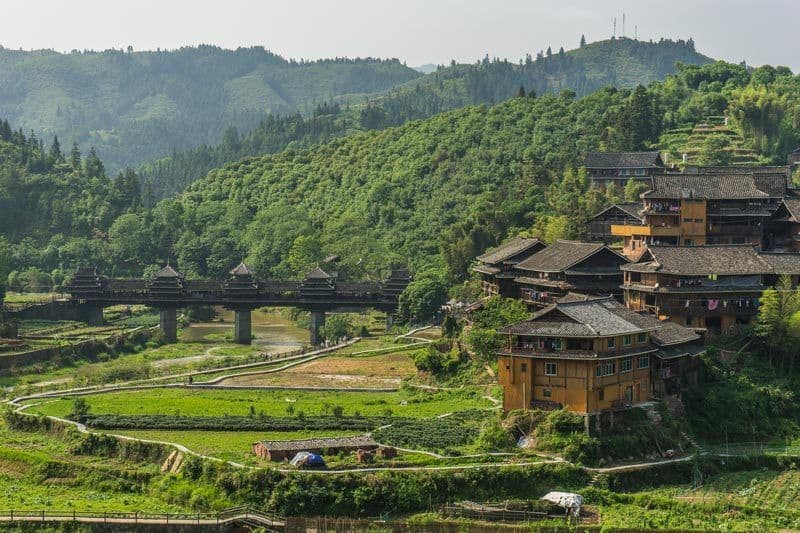
Biyang Panlong Cheng Ruins.
The archaeological site covers an impressive area of 3.95 square kilometers, with the core protection zone encompassing 1.39 square kilometers. Within this expanse lies a wealth of archaeological treasures, including:
- Palace ruins that reflect the sophisticated architectural styles of the era.
- Tombs of dignitaries, which provide insights into the burial practices and social hierarchies of the Shang Dynasty.
- Handicraft workshops, revealing the craftsmanship and daily lives of ancient artisans.
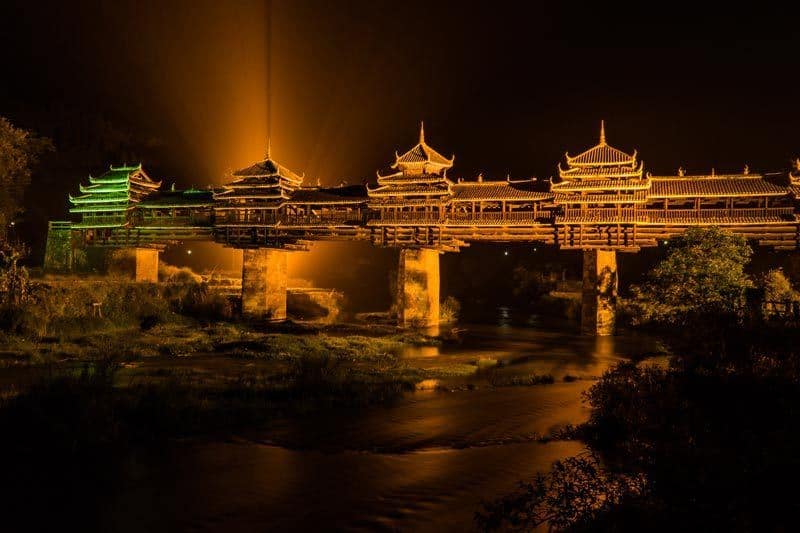
Biyang Panlong Cheng Ruins.
More than 3,000 exquisite cultural relics have been unearthed here, showcasing artifacts such as large jade daggers, intricate bronze tripods, and stunning turquoise-inlaid gold ornaments. These discoveries not only illuminate the artistic prowess of the Shang Dynasty but also serve as vital links connecting the Yangtze and Yellow River civilizations.
Legends and Lore
The Panlong Cheng Ruins are steeped in legends that enrich their historical narrative. One of the enduring tales speaks of a dragon that once inhabited the region, believed to be a guardian of the city’s prosperity. According to local lore, this dragon would rise from the depths of the Yangtze River during times of crisis to protect the city and its people. The name “Panlong,” meaning “coiled dragon,” is thought to be inspired by these legendary tales, symbolizing strength and protection.
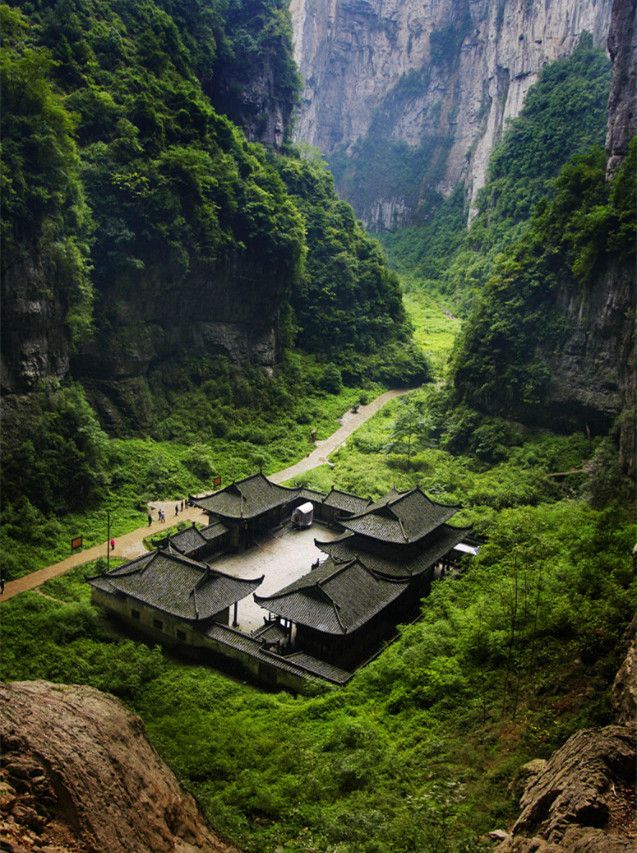
Biyang Panlong Cheng Ruins.
Another legend revolves around the revered figure of Fu Hao, a notable female military leader and priestess of the Shang Dynasty. It is said that her spirit continues to watch over the site, ensuring the preservation of its cultural legacy. The discovery of oracle bones inscribed with her name at the nearby Yin Ruins has further fueled her association with the Panlong Cheng Ruins, connecting the two sites in their historical significance.
A Cultural Treasure
The Biyang Panlong Cheng Ruins serve not only as an archaeological site but also as a vibrant cultural hub. The adjacent Panlongcheng Site Museum showcases many of the artifacts discovered at the site, allowing visitors to delve deeper into the rich history of the Shang Dynasty. Here, guests can marvel at the craftsmanship of ancient artisans and learn about the social structures and daily life of the time.
With free admission and a thoughtfully curated experience, the museum is a perfect starting point for understanding the monumental achievements and complex narratives woven into this ancient city.

Biyang Panlong Cheng Ruins.
Visiting the Ruins
For those eager to explore this historical gem, the site offers a unique opportunity to walk among the remnants of an ancient civilization. Imagine standing atop the ancient city walls, absorbing the expansive views and envisioning the bustling life that once thrived here. As you wander through the ruins, consider the layers of history that have shaped this region and its people.
In conclusion, the Biyang Panlong Cheng Ruins are not just an archaeological site; they are a bridge to the past, inviting travelers to uncover the rich history and legends that continue to resonate within the heart of China. Whether you are an avid historian or a curious traveler, a visit to this remarkable site promises to be a profound and enlightening experience.

Biyang Panlong Cheng Ruins.
Main Highlights: What You Absolutely Can’t Miss
Discover the Wonders of Biyang Panlong Cheng Ruins
If you’re a traveler intrigued by the tapestry of Chinese history and culture, the Biyang Panlong Cheng Ruins, or Panlong City Ruins, is an essential stop on your journey through Wuhan. This archaeological marvel, dating back over 3,500 years to the early Shang Dynasty, offers a glimpse into one of the earliest urban settlements in the region. Here are the must-see highlights that will enrich your visit:
1. The Archaeological Site
Stroll through the expansive ruins, which cover approximately 3.95 square kilometers. The site features remnants of ancient walls, palatial structures, and dignitary tombs, giving you a tangible connection to the past. The layout of the city, particularly the “front palace, rear sleeping quarters” architectural design, is one of the earliest examples of urban planning in China.
2. Panlongcheng Ruins Museum
This museum serves as the gateway to understanding the rich history of the site. Inside, you’ll find over 3,000 exquisite artifacts, including stunning jade daggers, ornate bronze tripods, and intricate turquoise and gold ornaments. The centerpiece, the “Turquoise Gold Ornament,” is a must-see. The museum’s exhibits provide context to the artifacts and showcase the advanced craftsmanship of the ancient Shang civilization.
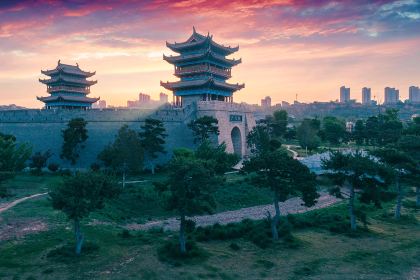
Biyang Panlong Cheng Ruins.
3. Key Cultural Relics
Among the treasures unearthed at Panlong Cheng, don’t miss:
– Large Bronze Round Tripods: These ceremonial vessels highlight the significance of bronze metallurgy in ancient China.
– Large Jade Daggers: Symbolizing power and status, these artifacts exemplify the artistry of jade carving.
– Bronze Axes and Ornaments: Witness the intricate designs that reflect the era’s aesthetic values and technological prowess.
4. The City Walls and Palatial Ruins
Feel the weight of history as you walk along the massive rammed earth city walls. The open-air palace remains provide a dramatic backdrop, evoking images of the city’s past splendor. Stand atop the walls for panoramic views of the surrounding landscape, allowing yourself to imagine the bustling life that once thrived here.
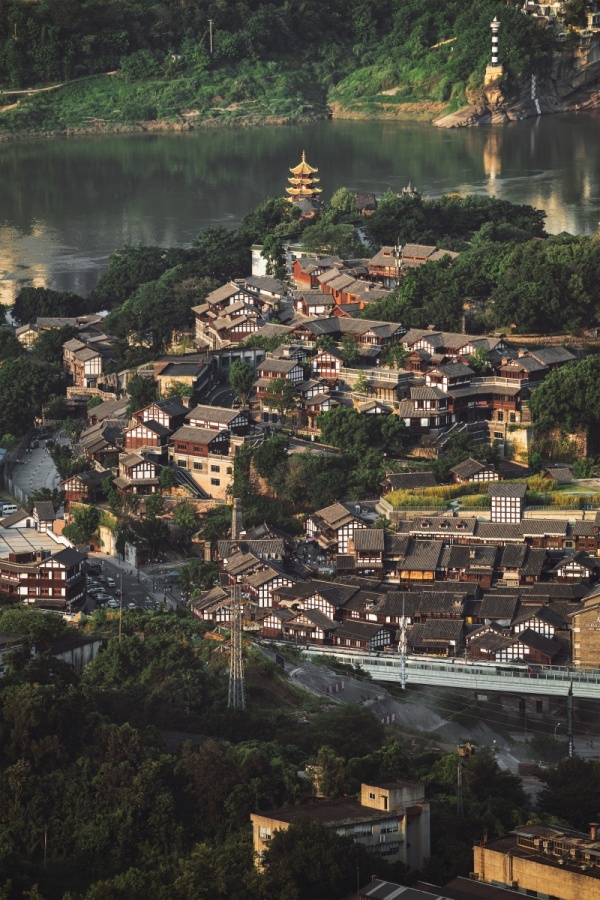
Biyang Panlong Cheng Ruins.
5. Temporary Exhibitions
Check the schedule for temporary exhibitions at the Panlongcheng Site Museum, which often host significant artifacts from across China. For instance, the “Four Wings of Shang” exhibition features relics from prominent archaeological sites, showcasing the interconnectedness of ancient Chinese civilizations.
6. Photography Opportunities
The desolate yet captivating landscape of Panlong Cheng offers a unique setting for photography. Capture the haunting beauty of the ruins, especially during golden hour when the light casts dramatic shadows. The site is often compared to a mini Egypt, making it an ideal location for those looking to create striking imagery.
7. Visitor Information
- Entry: Free admission, with online and offline reservations available.
- Hours: Open Tuesday to Sunday from 9:00 AM to 5:00 PM (last entry at 4:00 PM); closed on Mondays.
- Location: Easily accessible via Subway Line 2, with the nearest stop at Panlongcheng.
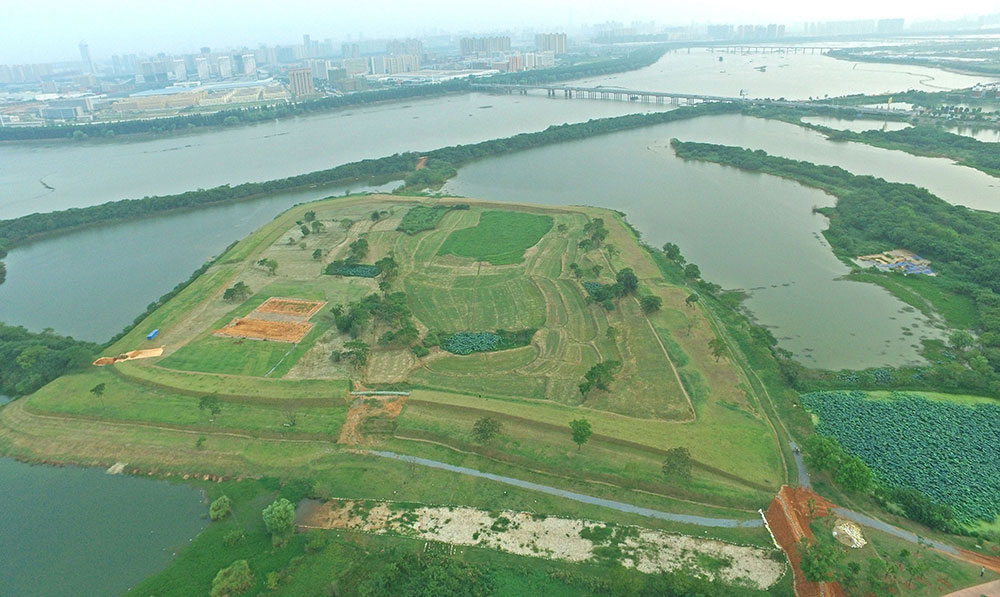
Biyang Panlong Cheng Ruins.
8. Plan Your Visit
Allocate at least 2-3 hours to fully explore the ruins and museum. If visiting during the hotter months, consider starting at the museum to enjoy the air conditioning before heading outdoors.
In conclusion, the Biyang Panlong Cheng Ruins is not just a historical site—it’s a profound journey back in time that invites you to explore the roots of Chinese civilization. Whether you’re a history buff or a casual traveler, the echoes of the past here will leave an indelible mark on your experience in Wuhan.
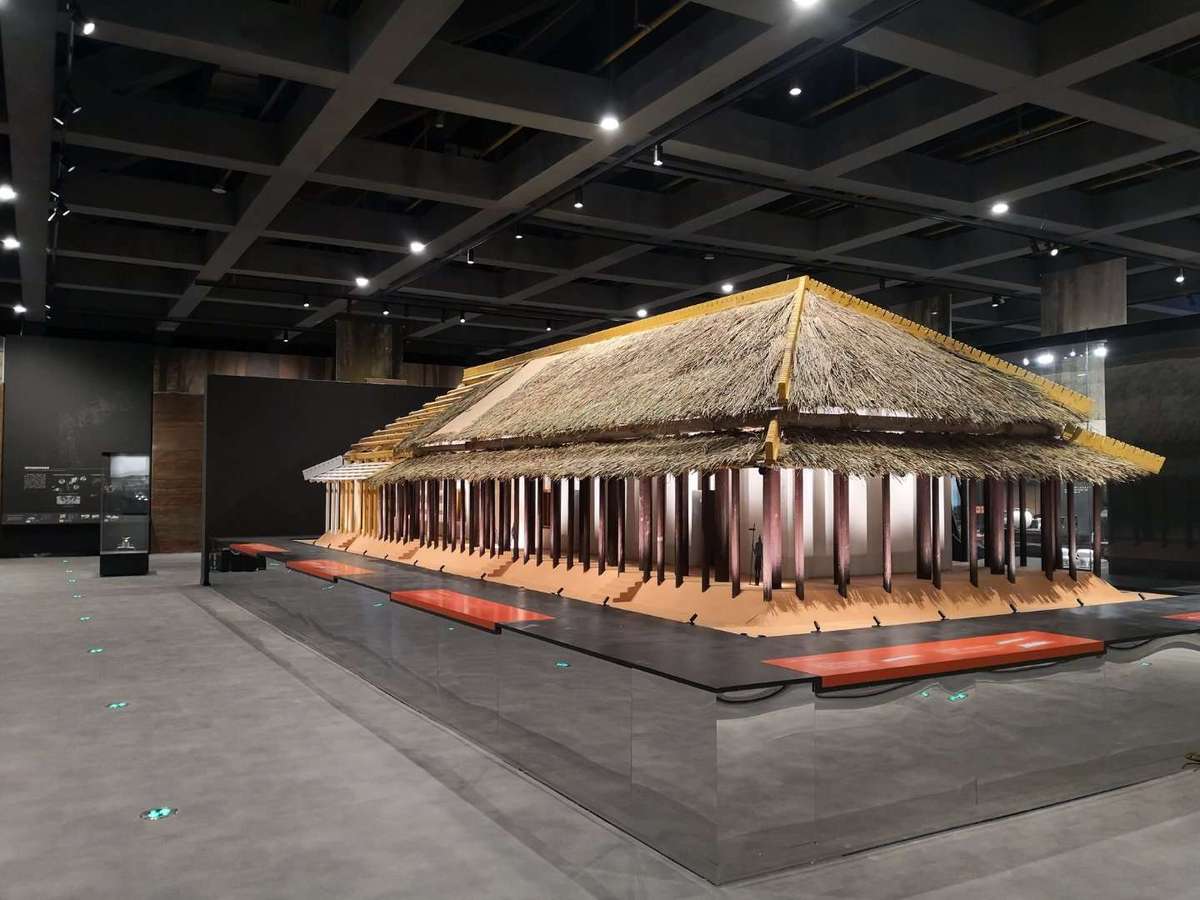
Biyang Panlong Cheng Ruins.
Planning Your Visit: A Practical Guide
Your Essential Guide to Visiting Biyang Panlong Cheng Ruins
Nestled in the Huangpi District of Wuhan, Hubei Province, the Biyang Panlong Cheng Ruins is a remarkable archaeological site that offers a fascinating glimpse into China’s ancient Shang Dynasty. As an international traveler interested in Chinese history and culture, this site is a must-visit that provides an enriching experience steeped in over 3,500 years of history. Here’s everything you need to know to plan your visit effectively.
Getting There
Location:
Biyang Panlong Cheng Ruins (盘龙城遗址)
Address: 1 Panlong Avenue, Huangpi District, Wuhan, Hubei Province, China.
Transportation:
– Subway: The easiest way to reach the site is via Subway Line 2 to Panlongcheng Station (Exit D).
– Taxi: Taxis are readily available in Wuhan and can take you directly to the site if you prefer a more direct route.

Biyang Panlong Cheng Ruins.
Opening Hours
- Museum: Tuesday to Sunday, 9:00 AM to 5:00 PM (last admission at 4:00 PM).
- Closed: Mondays, unless it’s a public holiday.
Admission Fees
- Entry: Free of charge. However, special exhibitions may have a small fee (approximately CNY 30). Be sure to check for any temporary exhibitions that might be on during your visit.
Recommended Visit Duration
To fully appreciate the site, allocate 2 to 3 hours for your visit. This will give you ample time to explore both the ruins and the museum, where you can delve into the rich artifacts unearthed from the site.
What to Expect
-
Archaeological Significance:
Panlong Cheng is one of the earliest Shang Dynasty city sites, renowned for its elaborate layout and significant archaeological finds. The site features remnants of palace ruins, dignitary tombs, and ancient workshops. -
Artifacts:
The site museum houses over 3,000 exquisite cultural relics, including grand jade daggers, bronze tripods, and intricate turquoise ornaments. These artifacts illustrate the advanced craftsmanship of the Shang Dynasty and its pivotal role in the development of Chinese civilization. -
Architectural Layout:
The ruins reflect a unique architectural design known as the “front palace, rear sleeping quarters” layout, showcasing the sophistication of early urban planning. -
Scenic Views:
Don’t miss the opportunity to stroll along the expansive grounds, where you can enjoy views of Panlong Lake and the surrounding landscape. The outdoor ruins, especially the massive rammed earth city walls, create a dramatic backdrop reminiscent of scenes from historical dramas.
Tips for Your Visit
- Plan Ahead: If you’re interested in special exhibitions, check the museum’s website or inquire upon arrival for the latest information.
- Stay Cool: The museum is air-conditioned, making it an ideal spot to escape the heat during summer months. Consider visiting the museum first before exploring the outdoor ruins.
- Photography: The site offers stunning photo opportunities, especially at sunrise or sunset. Bring your camera to capture the beauty of the ancient structures and artifacts.
- Language: While some staff may speak English, having a translation app can enhance your experience, especially when reading descriptions of artifacts.
Nearby Attractions
- Uprising Gate: A historical site significant to the 1911 Revolution, offering panoramic views and rich history.
- Hanyang Ironworks Site: An industrial ruin that reflects the evolution of modern China, perfect for photography enthusiasts.
- Qingchuan Pavilion: Located nearby, this pavilion provides beautiful views of the Yangtze River and is a quieter spot to enjoy local scenery.
Visiting the Biyang Panlong Cheng Ruins is not just an exploration of ancient history but also an opportunity to appreciate the roots of Chinese civilization. With its wealth of artifacts and serene landscapes, it’s a destination that will linger in your memory long after your visit. Embrace the journey, and let the echoes of the past enrich your understanding of China’s vibrant culture.
Tickets: Prices, Booking, and Tips
Discovering the Biyang Panlong Cheng Ruins: Ticketing and Travel Tips
Exploring the Biyang Panlong Cheng Ruins is a journey into China’s rich Shang Dynasty history, and planning your visit is crucial for an enriching experience. Here’s what you need to know about tickets, booking, and some handy tips to make the most of your trip.
Ticket Prices
One of the best aspects of visiting the Panlong Cheng Ruins is that admission is free! This makes it an accessible destination for history enthusiasts and casual travelers alike. However, keep in mind that there may be special exhibitions or events that require a nominal fee:
- General Admission: Free
- Special Exhibition (e.g., “The Four Wings of Shang”):
- Full Price: CNY 30
- Discounted Price: CNY 20
- Note: This exhibition features significant artifacts from the Shang Dynasty and runs until March 9, 2025.
Booking Your Visit
While the general admission is complimentary, it’s advisable to book your visit in advance to ensure a smooth experience, especially during weekends or holidays when the site can become busy. Reservations can be made online or at the entrance. Here are the details for booking:
- Online Reservations: Available via the official museum website or major travel platforms.
- Walk-in Reservations: Accepted at the entrance, but availability may vary.
Visiting Hours
To plan your visit effectively, note the following opening hours:
- Tuesday to Sunday: 9:00 AM – 5:00 PM
- Last Entry: 4:00 PM
- Closed on Mondays (except during holidays)
Tips for Your Visit
-
Best Time to Visit: Aim for weekday visits to enjoy a quieter experience. Early mornings or late afternoons can also provide cooler temperatures and softer light for photography.
-
Explore the Museum First: If the weather is particularly hot, consider starting with the museum, where you can enjoy air conditioning while learning about the rich history of the site.
-
Photography: The ruins are visually stunning, reminiscent of ancient Egypt. Don’t forget your camera! Capture the architecture and artifacts, particularly the exquisite bronze and jade pieces on display.
-
Plan for Time: Allocate 2-3 hours for your visit to fully appreciate both the museum and the outdoor site. This will allow you to explore the legendary palace ruins and the vast archaeological grounds without feeling rushed.
-
Check for Special Events: Keep an eye on the museum’s schedule for lectures or special guided tours that can enhance your understanding of the exhibits.
-
Transportation: The site is easily accessible via public transport. Take Subway Line 2 to Panlong Cheng station, Exit D, which brings you right to the entrance.
Visiting the Biyang Panlong Cheng Ruins is more than just a sightseeing trip; it’s a deep dive into one of the foundational eras of Chinese civilization. With free admission and rich cultural offerings, it’s a must-visit for anyone eager to understand the roots of Wuhan and its historical significance. Happy travels!
How to Get There: A Complete Transportation Guide
Getting to Biyang Panlong Cheng Ruins
Visiting the Biyang Panlong Cheng Ruins, a remarkable archaeological site steeped in over 3,500 years of history, is a journey back in time that offers a glimpse into one of China’s earliest civilizations. Located in the Huangpi District of Wuhan, Hubei Province, the site is easily accessible through various modes of transportation. Here’s how to reach this fascinating destination.
By Air
Wuhan Tianhe International Airport (WUH) is the nearest major airport, located approximately 40 kilometers from the Panlong Cheng Ruins. It serves both domestic and international flights, making it a convenient entry point for international travelers.
-
Airport to City Center: You can take an airport shuttle bus to downtown Wuhan or use ride-hailing services like Didi. The journey typically takes about 40-60 minutes, depending on traffic.
-
From the City Center to the Ruins: Once in the city, you can continue your journey to the ruins via subway or taxi.
By Train
Wuhan’s extensive rail network connects it to major cities across China. If you’re traveling from cities such as Beijing, Shanghai, or Guangzhou, you can opt for high-speed trains that arrive at Wuhan Railway Station or Wuhan Nan Railway Station.
- Wuhan Railway Station to Panlong Cheng:
- Subway: Take Line 4 from Wuhan Railway Station to Zhongnan Road Station. Transfer to Line 2 and head towards Panlongcheng Station. The journey takes about 1 hour.
- Taxi: A direct taxi ride from the station will take around 30-40 minutes.
By Metro
The Wuhan Metro system is efficient and user-friendly. To reach Biyang Panlong Cheng Ruins:
- Take Line 2 of the metro.
- Get off at Panlongcheng Station.
- Exit from Exit D, and follow signs directing you to the Panlong Cheng Ruins.
The metro ride from the city center to the ruins lasts approximately 30 minutes and is the most economical transport option.
By Bus
For those who prefer surface transport, several bus routes connect various parts of Wuhan to Huangpi District. Look for buses that head towards the Huangpi District or specifically to the Panlong Cheng area.
- Bus Options: Local buses may not have English signage, so it’s advisable to check in advance or use a translation app for assistance.
By Car
If you prefer the freedom of driving, renting a car is an excellent option. The site is located approximately 40 kilometers from Wuhan’s city center, and the drive usually takes about an hour.
- Parking: There is parking available near the entrance of the Panlong Cheng Ruins, making it easy to explore at your own pace.
Tips for Travelers
-
Opening Hours: The Panlong Cheng Ruins Museum is open from Tuesday to Sunday, from 9:00 AM to 5:00 PM (last admission at 4:00 PM). It is closed on Mondays.
-
Admission: Entry to the site is free, but it is recommended to make online reservations in advance, especially during peak tourist seasons.
-
Visit Duration: Allocate 2-3 hours for your visit to fully appreciate the ruins and the museum exhibits.
-
Local Cuisine: Don’t miss the opportunity to indulge in local Wuhan delicacies nearby, enhancing your historical journey with a taste of the region.
With these transportation options and tips, your visit to the Biyang Panlong Cheng Ruins will be both convenient and enriching, allowing you to dive deep into the roots of Chinese civilization.
Local Cuisine and Accommodation Nearby
When exploring the Biyang Panlong Cheng Ruins, indulging in local cuisine and finding suitable accommodation can enhance your cultural experience. The surrounding area not only boasts historical significance but also offers a delightful culinary journey and comfortable stays for travelers.
Savor the Local Flavors
1. Hubei Cuisine: A Culinary Adventure
Wuhan, the capital of Hubei Province, is renowned for its unique culinary offerings. Here are a few local dishes you must try:
-
Hot Dry Noodles (热干面, Rè Gān Miàn): This iconic dish features wheat noodles tossed in sesame paste, served with pickled vegetables and chili oil. It’s a perfect breakfast choice for locals and visitors alike.
-
Three Steamed Buns (三鲜蒸包, Sān Xiān Zhēng Bāo): These fluffy buns are filled with a mix of pork, mushrooms, and vegetables, offering a burst of flavors in every bite.
-
Wuhan Re Gan Mian (武汉热干面): Another version of hot dry noodles, this dish is typically served cold, making it a refreshing option during warmer months.
-
Doupi (豆皮): A savory snack made from thin layers of rice and mung bean flour, filled with meat and vegetables, then pan-fried until crispy.
-
Sour Fish Soup (酸汤鱼, Suān Tāng Yú): A local delicacy that combines fresh fish with a tangy broth, often garnished with herbs for an added kick.
2. Local Dining Spots
For an authentic taste of Hubei cuisine, consider visiting:
-
Hubei Cuisine Restaurant: Located close to the Panlong Cheng Ruins, this eatery specializes in local dishes, offering a cozy atmosphere and friendly service.
-
Wuhan Snack Street (武汉小吃街): A bustling market where you can sample various street foods, including spicy skewers, fried rice cakes, and sweet desserts. It’s an excellent spot for food lovers looking to try many different flavors.
Comfortable Stays Nearby
After a day of exploring the rich history at the Panlong Cheng Ruins, you’ll want a restful place to unwind. Here are some accommodation options that cater to different budgets:
1. Luxury Accommodations
– Wuhan Shangri-La Hotel: A top-tier hotel offering stunning views of the Yangtze River and a variety of dining options. With its opulent rooms and world-class amenities, it’s ideal for travelers seeking comfort and luxury.
2. Mid-Range Hotels
– Novotel Wuhan Xinhua: This modern hotel provides spacious rooms and convenient access to public transportation, making it a great choice for exploring the city and its historical sites.
- Wuhan East Lake Hotel: Nestled near East Lake, this hotel offers a tranquil environment with beautiful views. It’s perfect for those who appreciate nature alongside their historical explorations.
3. Budget-Friendly Options
– Wuhan International Youth Hostel: A popular choice among backpackers, this hostel provides a friendly atmosphere, affordable dormitory-style accommodations, and a communal kitchen for self-catering.
- Home Inn Wuhan Panlongcheng: An economical yet comfortable hotel, it offers clean rooms and essential amenities, making it a practical option for budget-conscious travelers.
Final Thoughts
Whether you’re indulging in the rich flavors of Hubei cuisine or settling into a cozy hotel after a day of exploring the ancient Panlong Cheng Ruins, the local offerings promise an enriching experience. Embrace the history, culture, and culinary delights that this remarkable region has to offer.
Frequently Asked Questions
Frequently Asked Questions
1. What is the historical significance of the Biyang Panlong Cheng Ruins?
The Biyang Panlong Cheng Ruins, located in the Huangpi District of Wuhan, Hubei Province, date back over 3,500 years to the early Shang Dynasty. This site is crucial as it represents one of the earliest urban centers in China and is often regarded as the “root of Wuhan City.” It features a well-preserved layout and a wealth of archaeological artifacts, making it a vital piece of Chinese civilization’s history.
2. How can I get to the Panlong Cheng Ruins?
Visitors can easily access the Panlong Cheng Ruins by taking Subway Line 2 to the Panlongcheng station. From there, it’s just a short walk to the ruins, making it a convenient destination for travelers exploring Wuhan.
3. What are the opening hours and admission fees for the site?
The Panlong Cheng Ruins are open from Tuesday to Sunday, 9:00 AM to 5:00 PM, with the last admission at 4:00 PM. Admission to the site and the accompanying museum is free, making it an accessible cultural experience for all visitors.
4. What can I expect to see at the Panlong Cheng Ruins?
Visitors can explore a vast area of archaeological significance, including palace ruins, dignitary tombs, and ancient workshops. The museum houses over 3,000 cultural relics, showcasing exquisite artifacts such as jade daggers, bronze tripods, and turquoise inlaid gold ornaments. The outdoor ruins feature impressive rammed earth city walls that evoke the grandeur of ancient civilizations.
5. Is there a museum on-site, and what does it offer?
Yes, the Panlong Cheng Ruins Museum is located within the archaeological site. It provides exhibits that feature a selection of artifacts unearthed from the ruins, offering insights into the early Shang Dynasty and its cultural practices. The museum also hosts temporary exhibitions, which often include significant artifacts from other notable archaeological sites in China.
6. Are there guided tours available?
While guided tours are not mandatory, they can enhance your experience. Local guides often provide deeper insights into the historical context and significance of the site. It’s advisable to check in advance if you wish to arrange a guided tour, as availability may vary.
7. What is the best time to visit the Panlong Cheng Ruins?
The best time to visit is during the spring or autumn months when the weather is mild, making it comfortable for outdoor exploration. Additionally, visiting on weekdays can help you avoid larger crowds, allowing for a more leisurely experience.
8. Are there any special events or exhibitions held at the museum?
Yes! The Panlong Cheng Ruins Museum frequently hosts temporary exhibitions that highlight significant archaeological findings and cultural artifacts. Keep an eye on their schedule, as these exhibitions often feature items from prestigious museums across China. Check their official website or inquire at the museum for the latest information on upcoming events and exhibitions.
Final Thoughts on Your Trip
As you prepare to leave the captivating Biyang Panlong Cheng Ruins, take a moment to reflect on the journey you’ve experienced through time. This archaeological site not only unveils the mysteries of the ancient Shang Dynasty but also serves as a vital link to the rich tapestry of Chinese civilization. Here are some key takeaways to enrich your understanding and appreciation of this remarkable destination:
Embrace the Significance
- Historical Depth: With a history spanning over 3,500 years, the site stands as a testament to the sophistication of early Chinese society, showcasing urban planning and cultural practices.
- Cultural Heritage: The artifacts unearthed, from intricate jade ornaments to monumental bronze vessels, reveal the artistic and technological prowess of the Shang Dynasty.
Reflect on Your Experience
- Architectural Marvels: Walking the grounds, you’ll find remnants of palace structures and workshops that connect you to the lives of those who walked here millennia ago. Imagine the bustling activity that once filled these spaces.
- Nature’s Beauty: The surrounding landscapes, particularly the tranquil Panlong Lake, offer a serene backdrop that enhances the reflective nature of your visit.
Practical Tips for Future Travelers
- Visit the Museum: Don’t miss the Panlongcheng Site Museum, where you can delve deeper into the artifacts and their significance. It’s a perfect way to conclude your exploration before heading back.
- Capture the Essence: The unique architecture and stunning relics make for perfect photography opportunities. Share your journey with friends and inspire them to uncover these hidden gems.
A Call to Adventure
As you leave, carry with you a profound sense of connection to the past and an appreciation for the enduring legacy of Chinese culture. Whether you’re a history buff, an art lover, or simply a curious traveler, the Biyang Panlong Cheng Ruins offer a glimpse into a world that has shaped not just Wuhan, but the entirety of Chinese civilization.
May your travels continue to weave stories of discovery, and may you find inspiration in every corner of the globe you explore!